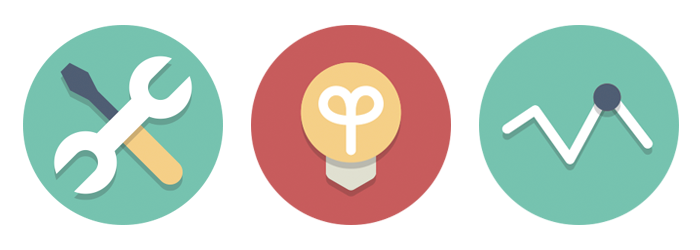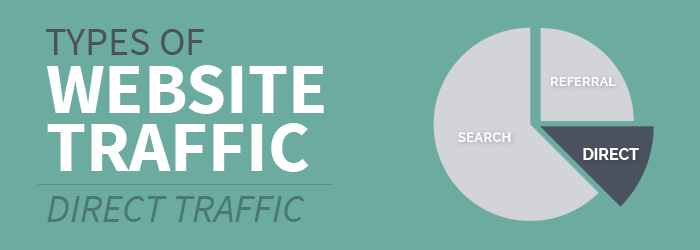How are people getting to your website? The answer to this question could help you improve your marketing strategy and increase your visibility on the web. Analyzing where your current website visitors are coming from will help you gain insight into where to focus your efforts for increasing website traffic.
By using a service like Google Analytics to track your website traffic, you’ll have access to a variety of data on how people are finding your website. The next step is to interpret that information in order to determine what improvements can be made to your website and marketing strategy. In this series, we’ll help you along in the analysis process by providing an overview of the types of traffic you’ll see in your analytics report, as well as tips on how to increase those traffic sources.
The three main types of website traffic are:
- Direct traffic
- Search traffic
- Referral traffic
Direct traffic
Direct traffic is essentially the simplest type of website traffic. It consists of any visitors who go to your website directly instead of getting there through another channel. For example, if a user types your website URL directly into their web browser or accesses it through a saved bookmark, that would be direct traffic. However, if a user gets to your website by clicking a link on another website or by searching on Google, that would not be direct traffic.
Direct traffic is important because it can provide insight into brand recognition and customer loyalty. If your website receives a large amount of direct traffic, it’s a good indicator that people are aware of your business and what it offers. Direct traffic can also be a helpful indicator of how successfully your offline marketing campaigns are promoting your website.

Types of direct traffic
Some types of visitors that might be included under direct traffic are:
Returning visitors/customers: These visitors are already familiar with your website and may have done business with you before.
People referred by word-of-mouth: Direct traffic is often the results of previous visitors or customers referring your website to other.
People driven by offline campaigns: These are visitors that find your website through promotion in offline marketing materials, such as TV commercials or print advertising.

How to increase direct traffic
There are a variety of ways you can increase the amount of direct traffic to your website. Here are some helpful methods to consider:
Simplify URLs: When choosing the URL for your website, make sure you select something that is simple and memorable. Furthermore, keep page URLs as simple and short as possible. This can help in getting a more accurate measure of direct traffic to your website.
Build brand awareness: Direct traffic is largely driven by visitors that are already aware of your website. This means that the more you promote your brand, the more likely people are to go directly to your website when they are looking for something your business offers.
Increase return visitors: The more return visitors your website has, the higher it’s direct traffic will be. Therefore, it’s important to implement strategies that will keep people coming back to your website. For example, make sure you’re frequently updating your website content, or consider making improvements to your homepage.
Improve offline marketing strategies: Offline marketing efforts are a great way to increase the amount of direct traffic your website is getting. Consider promoting your website through methods such as print advertising, coupons, business cards, brochures, or commercials. Make sure your website URL is prominently placed on any promotional materials in order to maximize the potential for increased website traffic.
Coming up
In our next post in this series, we will continue discussing the different types of website traffic with more information on search traffic.
What are your analytics saying about your website traffic?
TBH Creative can help you understand what your analytics data says about your website.

